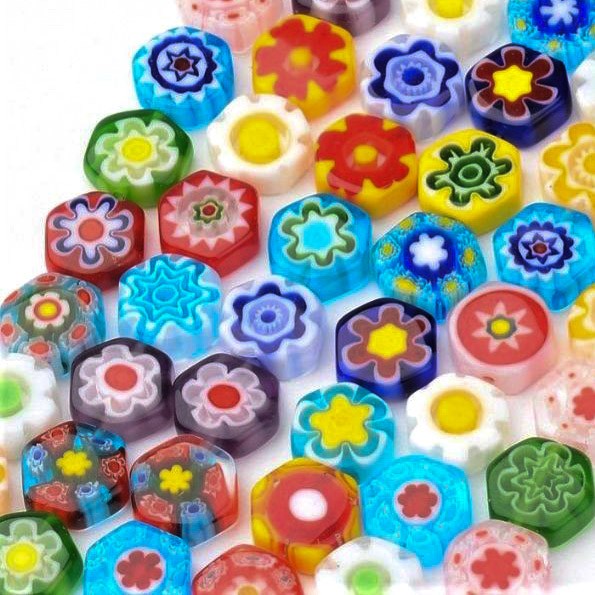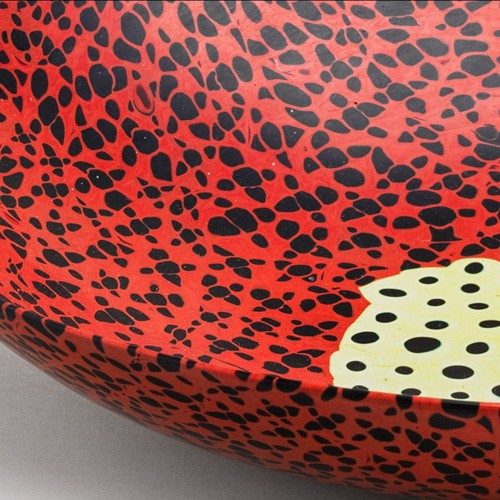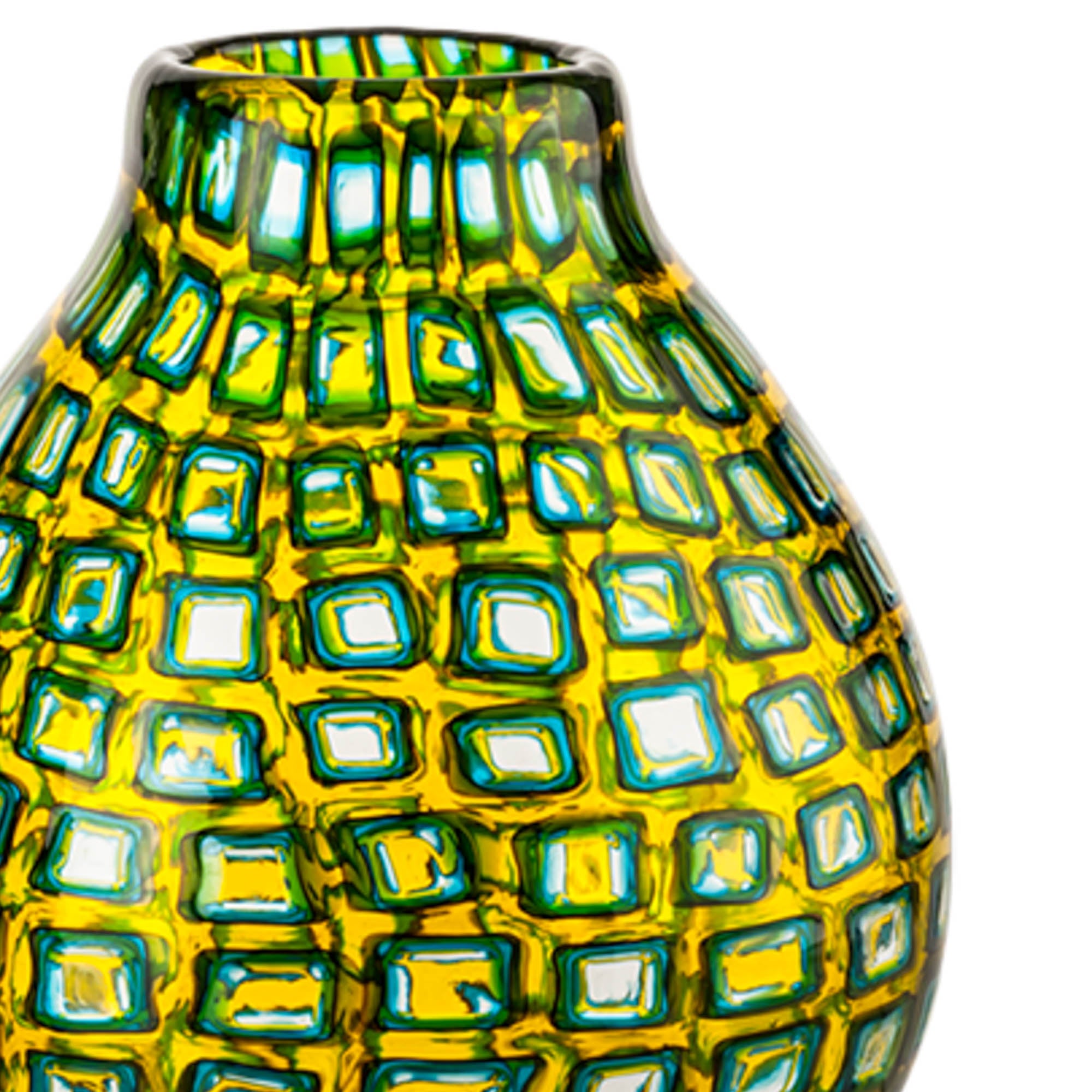This is one of the oldest known processes, the first examples go back to the Roman times. Items made this way were already existed in the XVI century.
Fallen out of use, this technique was started again in the mid-nineteenth century and reached his peak in the twentieth century, thanks to Artisti Barovier and Venini & Co .
After cooling, the rod is cut up into small disks of variable thickness, ranging from just a few millimetres to a couple of centimetres, whose section has the previously made design.
Disks are now ready to be used in several ways: the first consists in preparing on a metal plate ( bronzino ) a set of murrine according to a given design, heating them up and then making them adhere by rotation on the surface of an item having a cylindrical shape, still connected to the blower's pipe.
After this process is finished, sometimes the item is coated with a layer of transparent coloured glass. All the vases produced in the 40s and 50s by Artisti Barovier, by the F.lli Toso firm and by Venini are made with this technique.
The second, more suitable for the executions of dishes and bowls, consists in arranging the murrine inside a die made of refractory material, trying to fill in the empty spaces with glass powder so as to get an homogeneous mass. The whole is then heated as appropriate so that the murrine are linked together to form a single object. After cooling, the item is finished off with the grinding wheel to remove any irregularities that may be due to the heating process.
The famous Carlo Scarpa dishes were made in the 40s with this system, and even later by Venini & Co. in the following years and from Alfredo Barbini in the 60s.
|
This is the composition befor to be heated |
This is the final result |
here is a video to see how a basic murrina can be made:






1 comment
Susan
Hi,
I love these small pieces of glass. They are very beautiful.
I have a question for you.
If I wanted to do a mosaic glass piece in a picture frame to hang up in the window, so glass on glass, what kind of glue would I use? It would need to be string and dry clear.
Just wondering what your recommendation would be.
Thank you,
Susan
Leave a comment
All comments are moderated before being published.
This site is protected by hCaptcha and the hCaptcha Privacy Policy and Terms of Service apply.